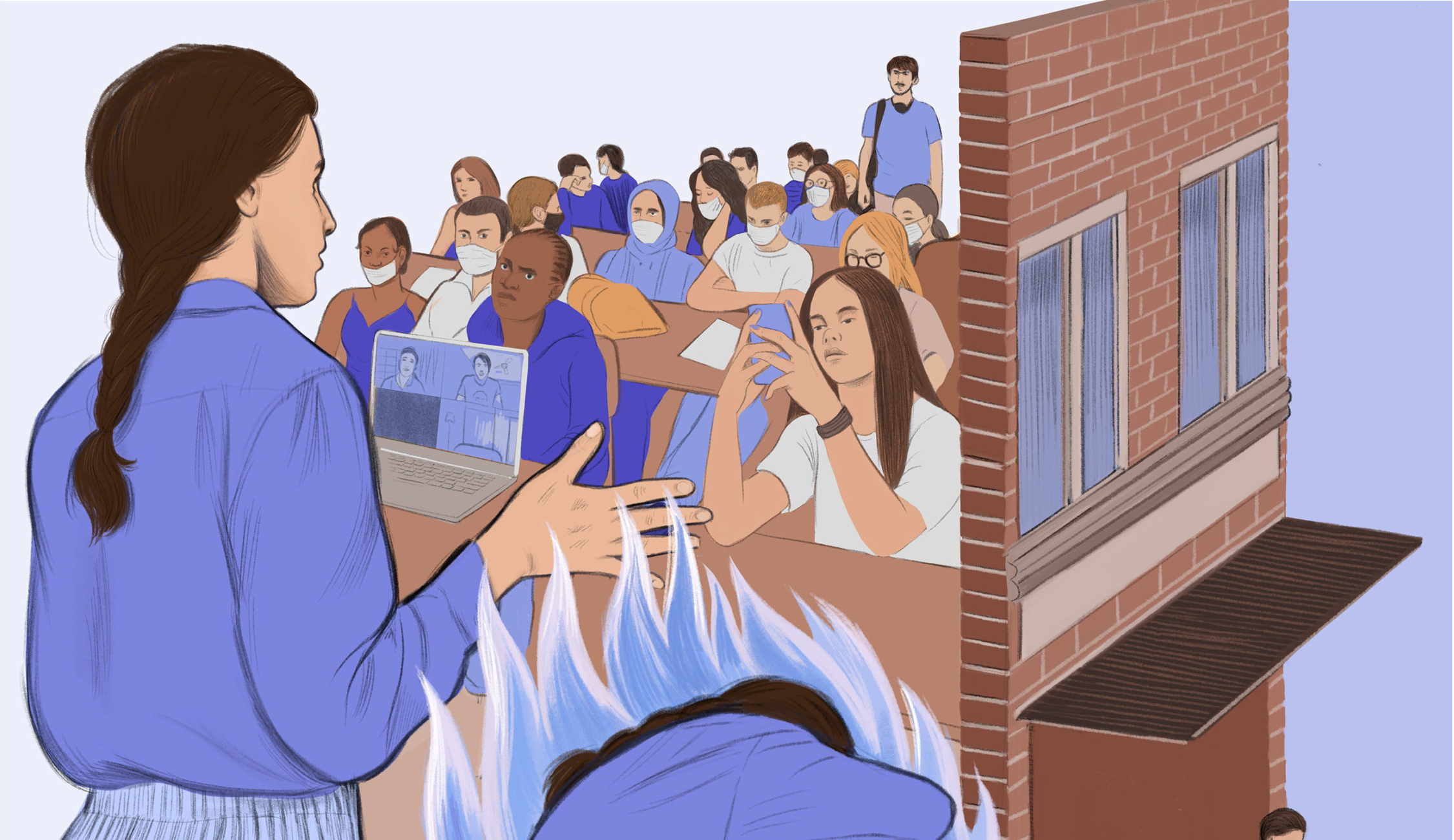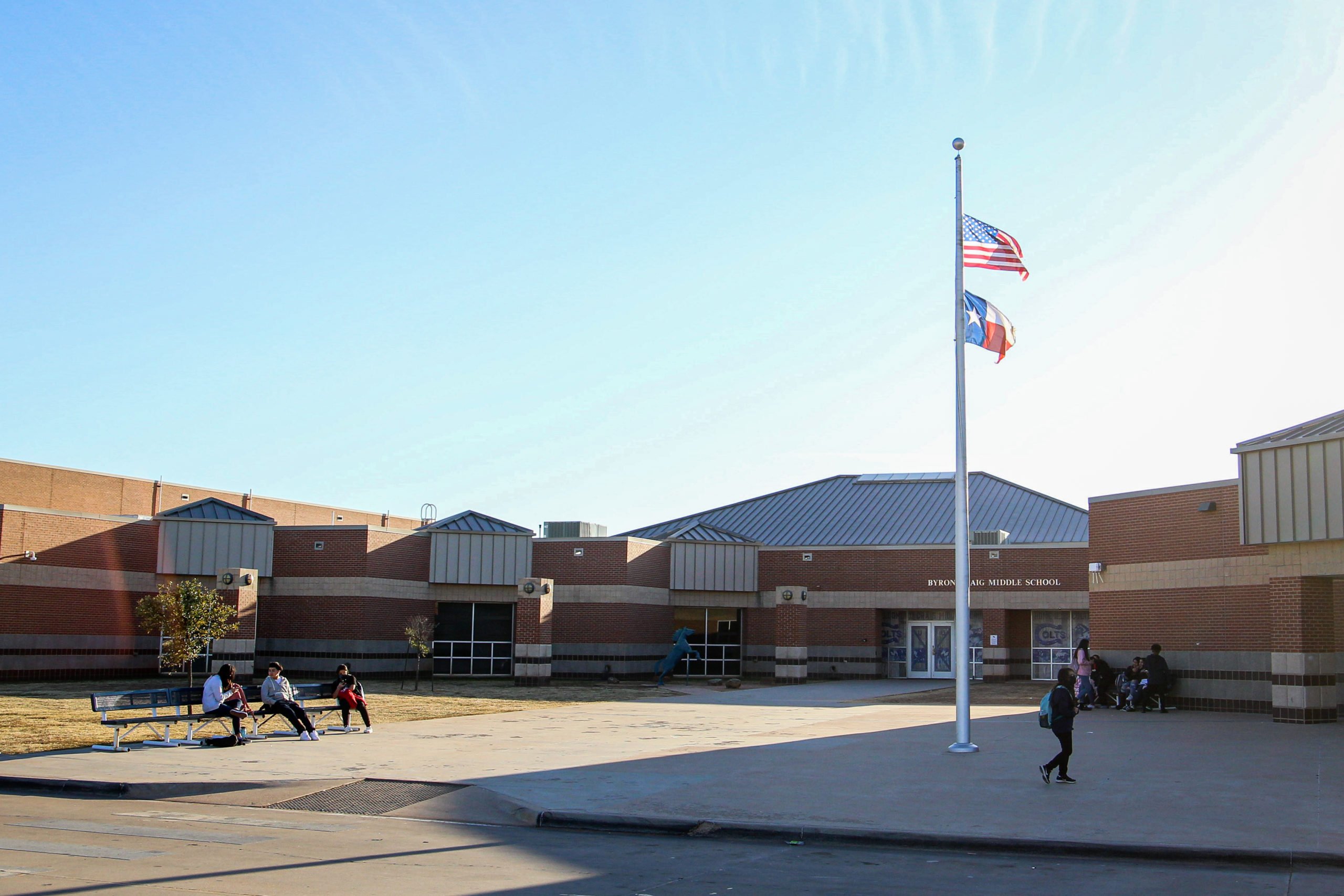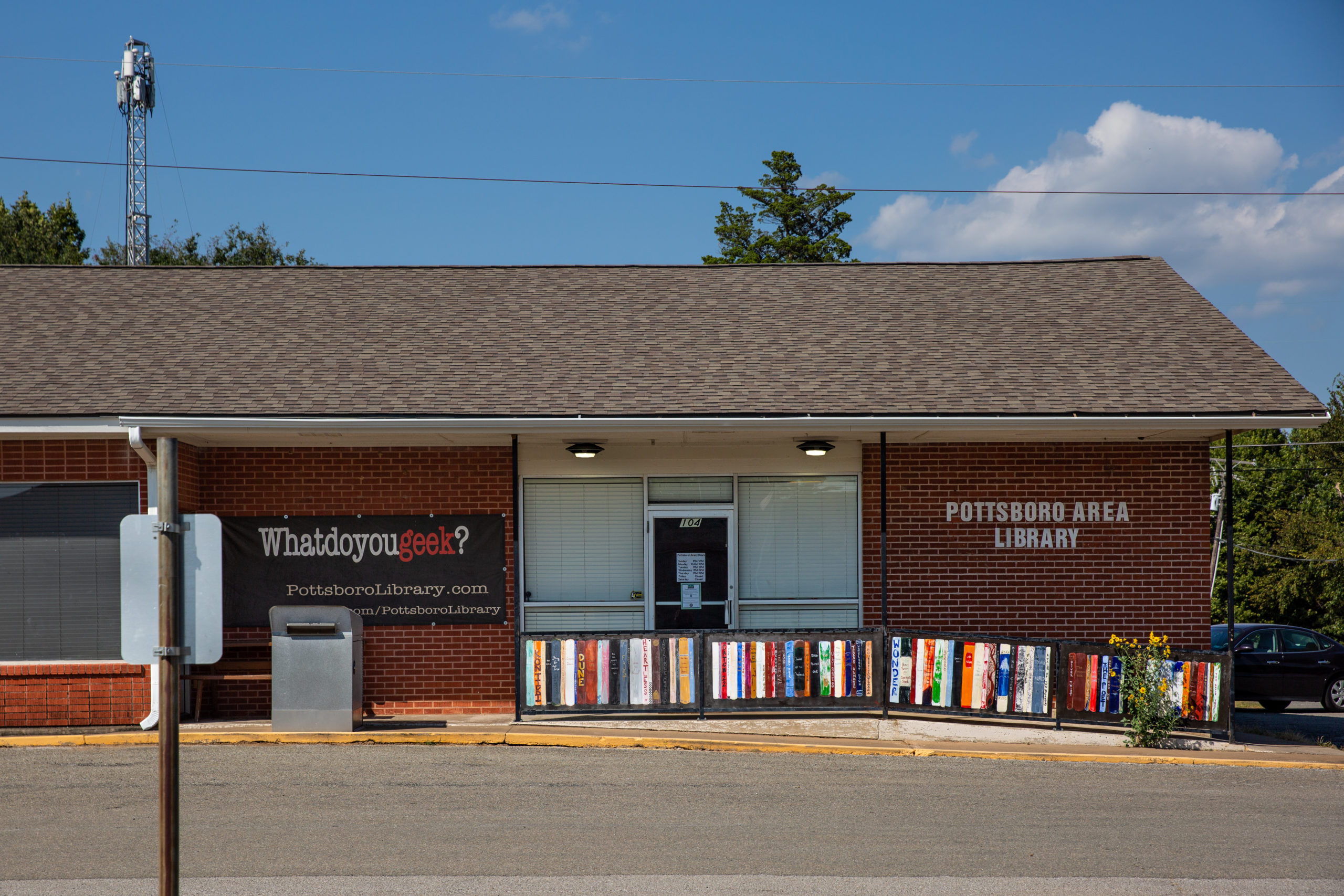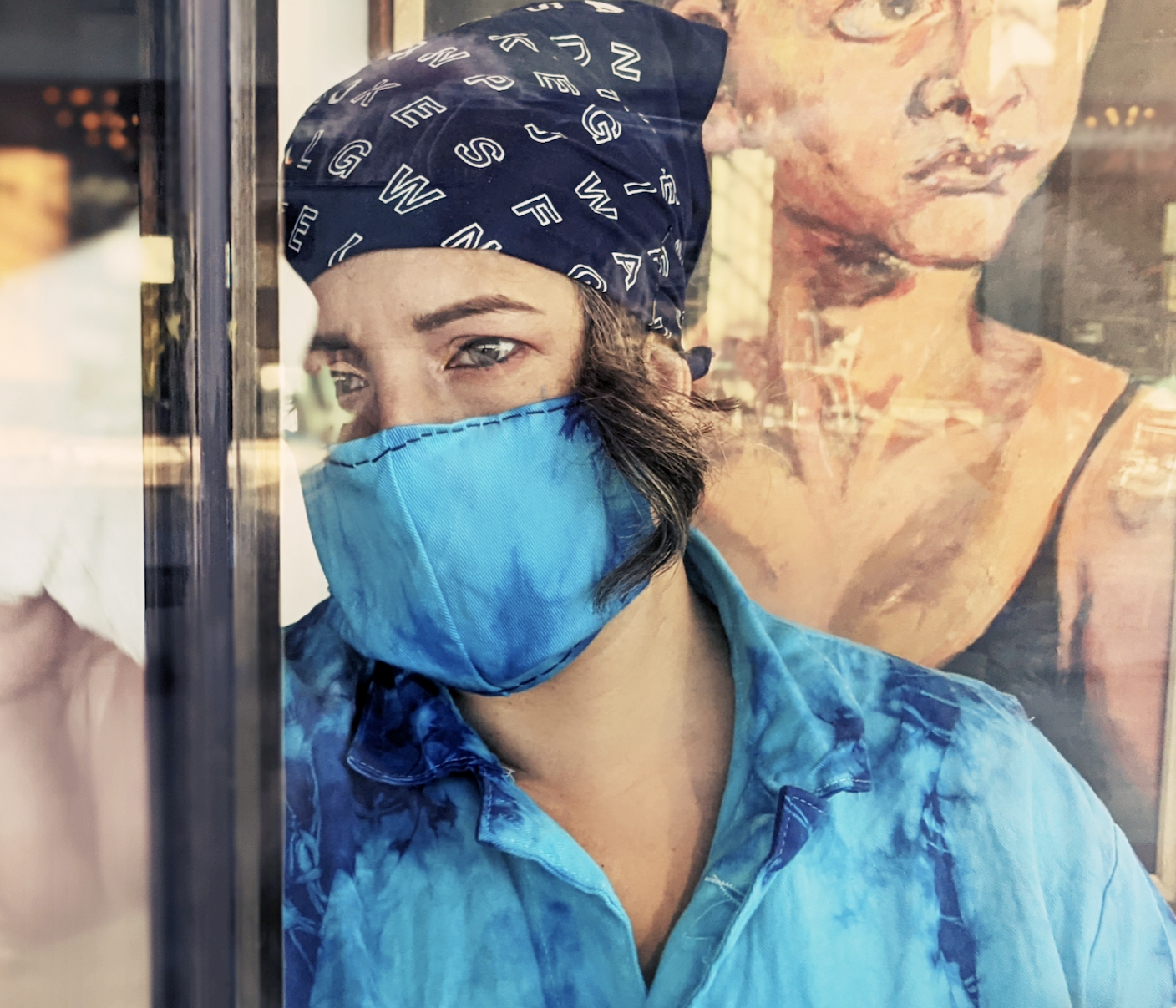Starting my career as a public school teacher at Austin Independent School District in the middle of COVID-19 wasn’t the best timing on my part. But after a year of remote instruction, meeting with students via Zoom, and lecturing from my home or empty classroom, I was eager to begin teaching face to face. I was ready to forge stronger relationships with students, learn classroom management—to be a real teacher. Three months later, I walked away from the profession.
When COVID-19 hit in March 2020 and my former job working on a congressional campaign ended, I decided to go into teaching. The desire to teach came from organizing undocumented youth and students, which illuminated a passion for working with young people. I love to help people learn. I always found myself in training roles or showing new hires the ropes. Plus, the labor movement in the U.S. was gaining momentum, and I was eager to join a union. Education checked all of these boxes. I enthusiastically prepared to do what teachers had done for me: to create a calm, consistent space for young people to learn, explore their identities, and crystalize their plans.
With the support of wonderful in-laws who were educators themselves and a community cheering me on, I got licensed through an online program and landed my first job teaching English and college readiness at various levels for a public high school in Austin. The campus was a Title 1 school, meaning our percentage of low-income students was above the district average; the student body was over 80 percent Hispanic.
Still, I felt nervous. On an educators’ forum online, I read a comment from someone abroad saying, “I love teaching, but I will not teach in the United States.” That remark stuck in my mind, like scribbled-on paper crumpled and wedged into the corner of a desk. I resented something about those words, felt some insight hidden in the gulf between the commenter’s knowledge and mine, but I tried to shake it off and began the year hopeful.
I started teaching remotely in August, just five months into the pandemic. District policy did not require students to turn on their cameras out of concern for equity, as forcing kids to show where they lived could embarrass some; my first few virtual classes instructing a wall of blank screens felt clumsy and discouraging. I had no expressions to gauge how the lesson was landing, and students were often sidetracked by distractions ranging from cellphones to caring for younger siblings. Between planning, grading, and making calls to families, I worked late every weeknight and spent hours every weekend catching up.
By the end of the first grading period, teachers were scrambling to address massive failure rates and curb the uptick in drop-outs. Mere months before their graduation, students disappeared from my roster. I often couldn’t get in touch with anyone in a student’s family. Even my successes were infuriating in their own way: I had multiple seniors working jobs whose bosses scheduled them to work during school. I gritted my teeth trying to imagine the kind of cockroach who asks a student to work during the school day, but did my best to help students catch up in the minutes before they had to leave for their shifts.
The weight of death at work was palpable. On our union chat, fellow teachers shared fundraisers for students who lost parents to COVID-19. Eventually, everyone knew someone who had contracted the virus or succumbed to it. One of my favorite students was diagnosed with cancer. We had virtual “safety drills” in which we walked through emergency procedures, reminding kids of the ever-present threat of school shootings. I found myself thinking about how buried I felt, about the six feet we maintained for social distancing and the six feet we buried people we lost.
One morning, I walked toward the building and saw a coworker. Mustering some cheer in my voice, I asked how he was doing. “Awful,” he replied. “This shit sucks. Just wait until next year. It’s so much better when the kids are here.”
I took solace in the future and tried to find silver linings in the present. I cherished little triumphs teaching. I built positive relationships with students. Some stayed behind in our Zoom room after class to talk to me. One shared her writing and told me about her favorite musicals. Another showed me anime intros and had me rate each on a scale from 1 to 10.
I can’t capture all of my students’ stories. I can’t convey how deeply they moved me. I remember a high school teacher explaining to our class why she loved working with kids that age, saying, “Y’all haven’t defeated yourselves yet.” Their limitless ambitions—animator for Pixar, Austin FC soccer player, Harvard grad—represented this country’s potential. I was desperate to nurture that optimism, which I felt was foundational to making the world better.
In February, our community was hit with an unprecedented winter storm, which wreaked havoc on the state’s energy grid. I used my community-organizing skills to coordinate deliveries to my students’ families through Austin’s chapter of the Democratic Socialists of America and Austin Mutual Aid.
I began to deal with behavioral issues as students came back in person in the spring. These new challenges demanded a lot from me and left me with a lingering concern about my ability to do the job. Still, I recuperated over the summer and went into my second year confident. Whatever was going to happen, it couldn’t be worse than the year I’d just had.
On my first day back, I had some encouraging moments interspersed with my amateurish handling of new classes. The low point of the day was my largest class masterfully ignoring me for most of the period. Deflated, I slunk to my department chair’s room after school and got some advice for changing my approach. Unfortunately, in a class of 35, implementing a seating chart wasn’t easy: I didn’t have enough desks to seat all of my students at first and had to use stools and my own desk chair to accommodate everyone. The idea that I could properly educate them in a room not equipped for them was unserious, and the students were unserious in response.
That week, at age 29, I had my first anxiety attack. While my heart pounded and I frantically Googled to determine whether I needed to go to the hospital, I read that the average attack lasted 30 minutes. Mine lasted the entire night. I dragged myself back to school the next day exhausted, morose, and disheartened.
It became clear to every educator who returned to school this year and thought COVID-19 was rock-bottom, we were wrong. Our students came back with significant trauma from a year and a half of isolation, many in homes that were unstable, under-resourced, or outright abusive. This trauma manifested in several ways. Students fixated on cellphones and became irritated when asked to put them down. Some remained unresponsive when prodded to get on task, while others struggled to get out of bed in the morning or shower due to depression. Kids called teachers names or yelled over us. They fought, used substances, and started fires in the bathroom at the more extreme end.
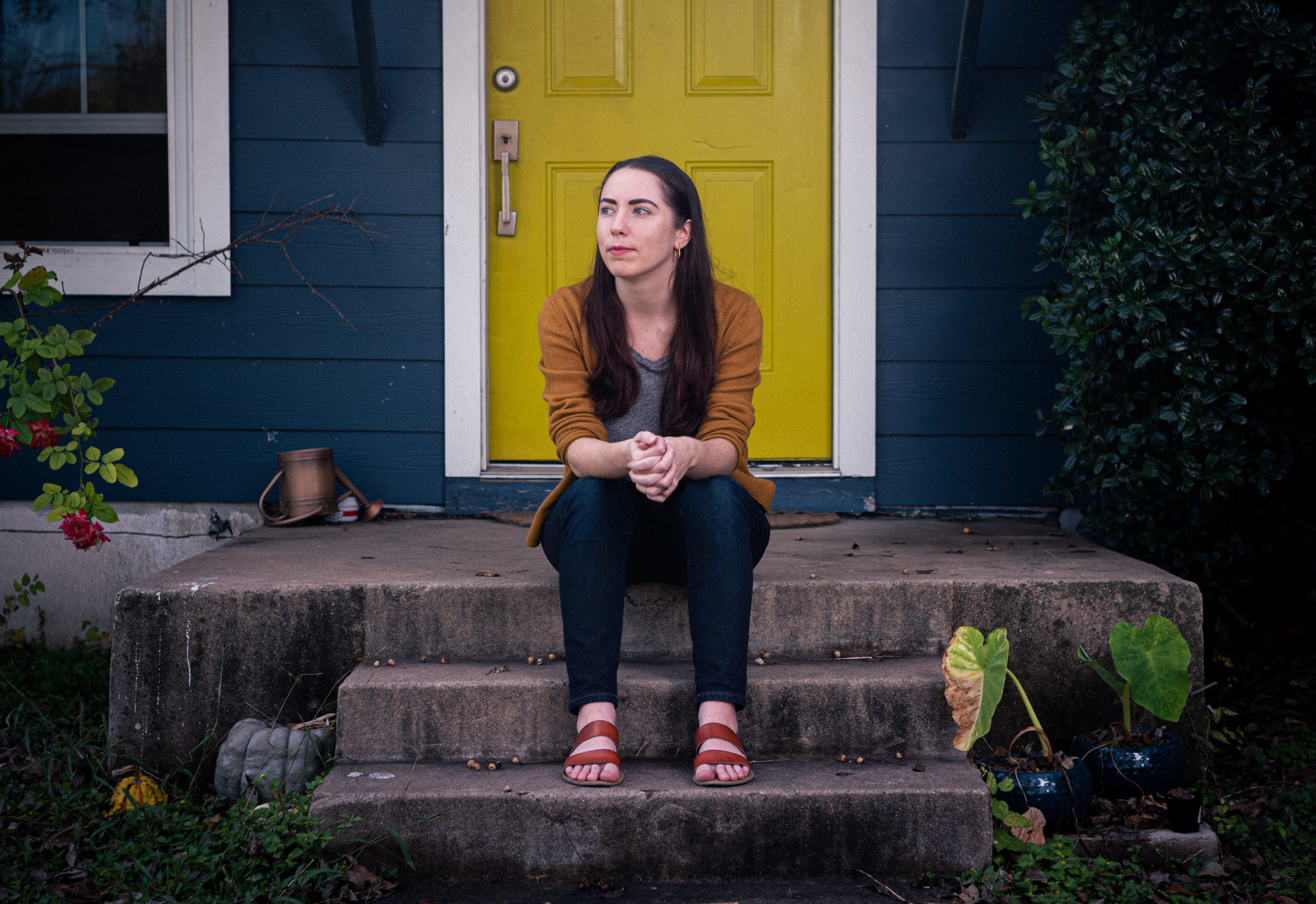
A coworker shared a story at a union meeting about a student who displayed nonverbal cues after being asked to focus on their work and was unable to do so. My colleague checked if the student wanted to talk one-on-one. The moment she brought them outside, they broke down crying.
I had the privilege of learning many of my students’ stories and struggles. I had a student whose mother sent her to a gay conversion camp, students who’d experienced homelessness and workplace abuse, students whose parents were deported. I had one kid, a refugee, who was imprisoned as a child. Often, they spoke casually or even joked about these traumatic experiences, which was familiar to me—I didn’t see my hardships growing up as traumatic until well after high school—but it colored my view of behavioral issues. When they acted out in class, I recognized there was a story underneath I couldn’t see.
Empathy alone didn’t equip me to handle my classroom. Teachers this year have struggled to navigate student behavior in a way that centered emotional growth rather than punishment. Responding to misbehavior isn’t just emotionally taxing; it consumes significant amounts of time and energy to enlist the various resources to help and implement the proper interventions.
Trauma didn’t always manifest itself as misbehavior, though. One morning, a student came to me in tears because her uncle was dying. I knew someone grappling with that kind of grief couldn’t perform academically, so I wrote her a note and let her go to the counselor. She was sent back to class within ten minutes.
My best guess at why this happens is that Texas schools are understaffed at all levels—in administration, counseling, teaching. Every worker in our building was being asked to do more than they could handle. In AISD, one offshoot of this problem is a process called “leveling,” in which campuses are compared in terms of student enrollment; well into the year, staff are reassigned to different schools based on need. This means that after teachers had spent weeks building relationships with their students, their courses were dissolved—the teachers disappeared, and those kids wound up in entirely different courses. Students who did not speak English were placed in English-speaking classes at our campus while those with disabilities were moved out of classes designed to accommodate them, all because of leveling.
I was in the teacher’s lounge heating my lunch one day when a coworker walked in. I greeted her numbly. After a brief silence, she said, “It’s never been like this, by the way.”
I looked at her. “What do you mean?”
“This school. The students. I’ve been here for more than 20 years, and I’ve never seen it like this. This is insanity.”
Because of such conversations, it was hard for me to parse which struggles could be chalked up to my lack of experience versus those that were due to COVID-19. That everyone was suffering was unambiguous. During another union meeting, another colleague said, “I don’t know how to be good at my job anymore, and I wonder if I ever was.”
In such a dour time, leadership could have committed to the mental health of staff and students. Instead, I saw a zealous return to the standardized testing pressures of a normal year, usually focused on the State of Texas Assessments of Academic Readiness, or STAAR. Departments required teachers to abandon lesson plans they’d painstakingly developed over years to adopt a standardized curriculum from the district. While we joked about the “Stepfordization” of our classrooms, the way administrators implemented these changes devastated morale. My coworker who last year advised me to look forward to students returning told me he planned to leave teaching after this year.
“It got real bad here real fast, and if it can get that bad here, it can get that bad anywhere I go,” he told me.
Some school administrators showed a total lack of sympathy for anyone working under them. During a meeting in which an admin communicated new expectations around STAAR testing, two department chairs wept openly. They tried to explain how overwhelmed they were, that the onerous testing requirements imposed an unmanageable burden, and that they couldn’t accomplish what they were being asked to do. I had coworkers who routinely stayed on campus until 9 p.m. trying to meet such expectations, with little support. The administrator shrugged them off. Another veteran teacher told me in the hallway before class one morning, “You never really get your head above water in teaching; you just learn to breathe underwater.”
I felt like I hadn’t breathed in months. I found myself unable to compartmentalize my work. Even when I wasn’t working, I was gripped by anxiety over school. I went to sleep worrying about my kids. I woke up and immediately dreaded going to my job.
One evening after work, my partner and I watched a particularly grotesque horror movie at the theatre. Mid-film, I started to feel nauseated and walked out to get some water. I got to the hallway and fainted. Humiliated when I came to, I tried to stand and collapsed again. Strangers got my partner and called EMS, who told me that the combination of the movie, dehydration, and stress had caused me to pass out. For the first time in my life, I began seriously considering taking anxiety medication.
I thought back to the comment I’d read before my first year: “I love teaching, but I will not teach in the United States.” I’d unfolded the paper now. I understood the bitterness. Watching my mentors work beyond exhaustion, my colleagues suffer countless indignities for their inability to accomplish the impossible, and students grow disillusioned with school was altogether too much despair. A loved one’s sudden mental health crisis was the final straw for me. I couldn’t conquer my anxiety. I couldn’t be the teacher my kids deserved while also being who my loved ones deserved. Out of the remaining instinct for self-preservation I had, I decided to walk away.
Saying goodbye to 200 people in a week was not something I was prepared for, and I did plenty of weeping as I left. I printed off copies of the poem “Good Bones” by Maggie Smith for my kids. My mentor asked me to braid her hair to prepare for a run she was taking that weekend on my last day. Even after receiving an outpouring of support from my community, I mourned what I was losing, what my absence would cost my kids and coworkers.
I am part of a statistic. As of 2019, one in 10 Texas teachers left after their first year. That number has undoubtedly worsened with the pandemic. Texas Education Agency data show a 27 percent decrease in new teacher certifications since 2014, meaning fewer people are becoming teachers. If the RAND Corporation’s June survey offers an accurate prediction, one in four educators across the country will leave the profession after this year. Some Texas districts are already Zooming in out-of-state teachers to deal with shortages.
Between COVID-19 and the Great Resignation, American schools face an existential crisis. Teachers have been working themselves into despair for too long. More and more, we are saying, “Enough.” We are finally accepting that we cannot work hard enough to overcome systemic inequities amid austerity, that the failure of our public education system is not the result of our personal character flaws, and that we deserve better than being treated like indentured servants. I hope to see a repeat of the 2018 Red State teachers’ strikes to show the decision-makers who have been underpaying and overwhelming educators what happens when schools can’t function. Since politicians are not acting with anywhere near the urgency called for, they’ll learn soon enough.
Marina Roberts is a former teacher at the Austin Independent School District and partner of Texas Observer staff reporter Gus Bova.
